Facts About D-Day – The Amphibious Landings That Changed the Course of World War II

D-Day is famous for being a turning point in the fight against Germany during World War II. On June 6, 1944, Allied troops from several nations crossed the English Channel and landed on Normandy, prepared for a fight to liberate France and, ultimately, the entire European continent. It’s a day that went down in history, not just for its sheer size, but for the impact it had on the conflict.
The following as some little-known facts about the D-Day landings.
What does the ‘D’ in D-Day stand for?

Photo Credit: Hulton Archive / Getty Images
Let’s kick things off with a question many people have asked in the eight decades since the Normandy landings occurred: just what, exactly, does the “D” in D-Day stand for? As it turns out, the answer is pretty underwhelming.
The “D” is short for “Day,” meaning the entire name for D-Day is “Day-Day“. It doesn’t really roll off the tongue, does it?
A fatal live-fire rehearsal
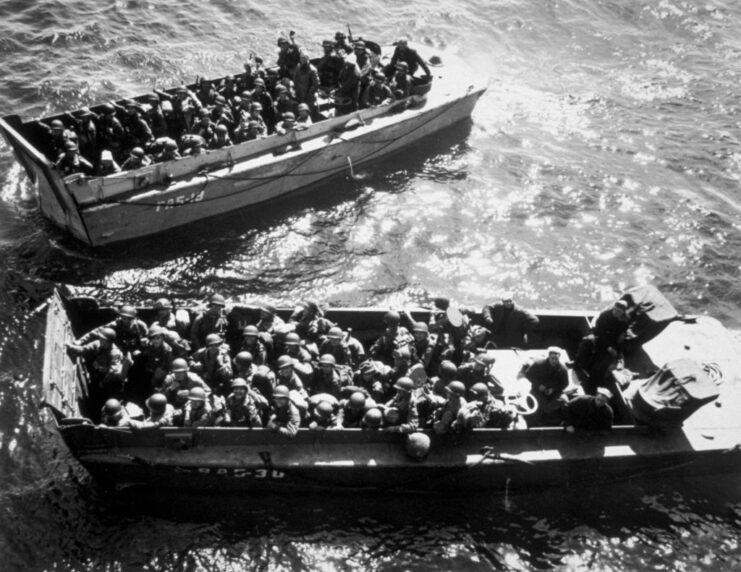
Photo Credit: Keystone / Getty Images
A lot of preparation went into the D-Day landings, much of which involved training troops for what they could expect upon arriving in German-occupied France. Several coastal villages were taken over and numerous rehearsals were held.
One practice run was the fatal Exercise Tiger, which resulted in the deaths of over 700 Allied troops. Many of the casualties were killed during a live-fire exercise, while many others perished during what became known as the Battle of the Lyme, during which E-boats operated by the Kriegsmarine attacked Tank Landing Ships (LST) in the English Channel.
Nearly 160,000 Allied troops were involved in the D-Day landings
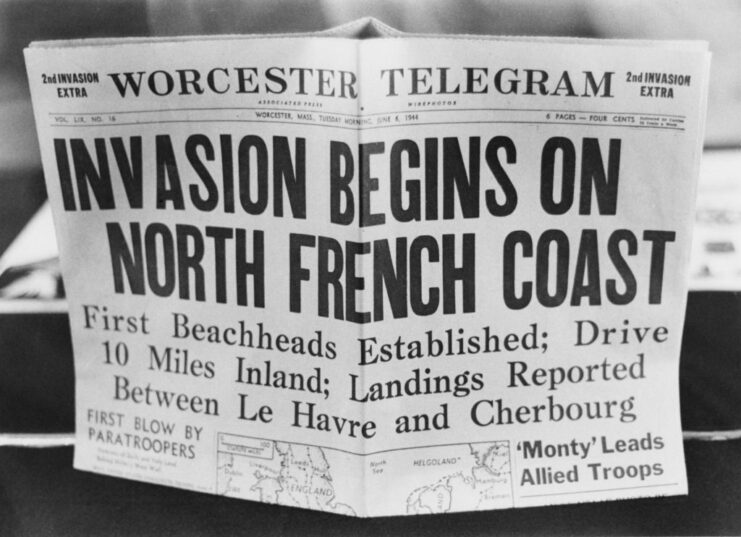
Photo Credit: FPG / Hulton Archive / Getty Images
Given the impact the D-Day landings had on the Second World War, it’s not surprising that they involved well over 100,000 Allied troops. Of the nearly 160,000 who were involved, 83,000 were British and Canadian, while 73,000 were American. In comparison, the German forces amount to around just 50,000 men.
As Operation Overlord – also known as the Battle of Normandy – continued, over two million Allied soldiers fought to liberate France.
Operation Bodyguard came before Operation Overlord
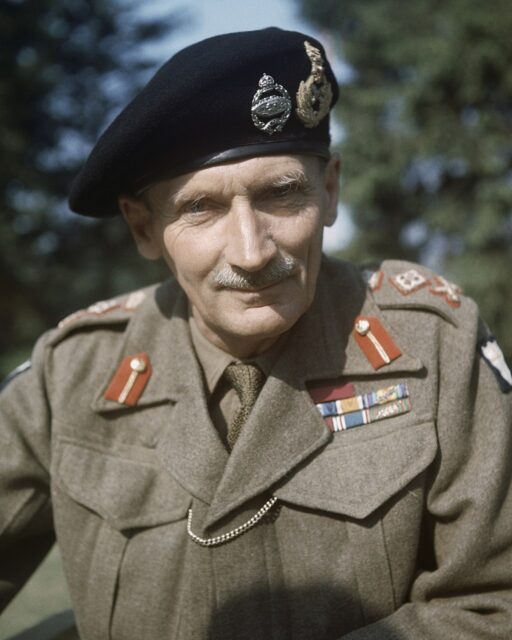
Photo Credit: War Office Official Photographer / Imperial War Museums / Wikimedia Commons / Public Domain
In the lead up to the D-Day landings, the Allies went to great lengths to ensure their success. This included tricking the Germans. Operation Bodyguard was their way of doing this. The deception mission involved convincing the Germans that attacks would be against Pas-de-Calais, not northwestern France, meaning troops would be moved away from the intended target for D-Day.
An interesting part of Operation Bodyguard was Operation Copperhead, in which a Bernard Montgomery lookalike was hired to portray the famed British officer throughout Allied territory. The idea was that Montgomery couldn’t possibly be involved in the planning of D-Day if he was traveling around so much. It also helped that the lookalike spread fake information.
D-Day was initially slated to occur on June 5, 1944
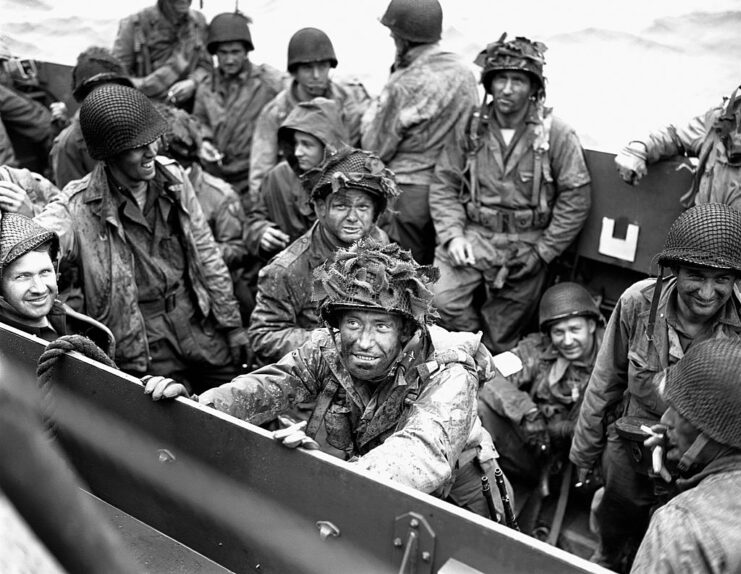
Photo Credit: CORBIS / Getty Images
June 6, 1944, is one of the most well-known dates in history, but did you know D-Day wasn’t originally scheduled to happen that morning? The plan had been for the landings to occur on June 5, but these were postponed 24 hours after officials learned from Irish postmistress Maureen Flavin Sweeney of inclement weather that was incoming.
Supreme Allied Commander Gen. Dwight D. Eisenhower was ultimately the one who made the decision to delay the landings, ensuring not only their success, but saving the lives of Allied troops.
Thousands of ships and landing craft were involved in D-Day
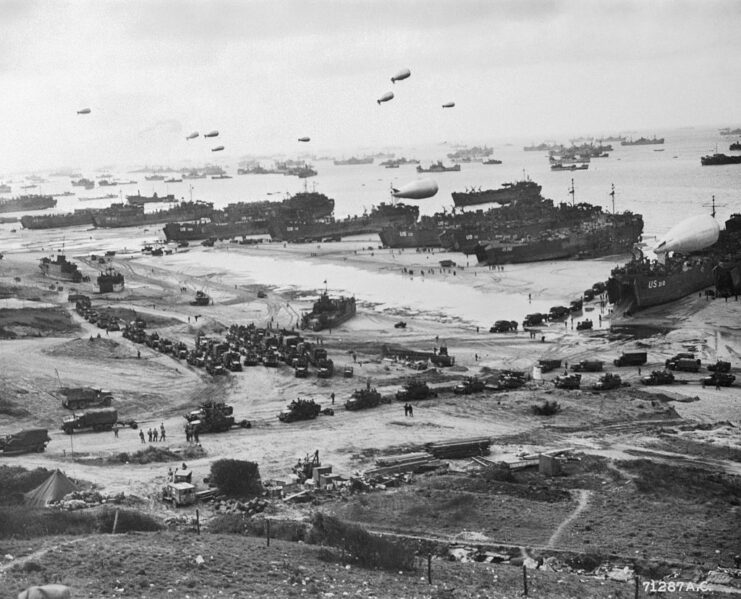
Photo Credit: Bettmann / Getty Images
D-Day was centered around amphibious landings, which means the troops needed vessels to get across the English Channel.
It’s reported that nearly 7,000 ships and landing craft were used to ensure the success of the landings. Of that total, 80 percent were supplied by the British and 16.5 percent came from the United States.
What obstacles did the Allies face on the landing beaches?

Photo Credit: Arterra / Universal Images Group / Getty Images
Aware the Allies would likely launch an attack on France, the Germans had fortified the coast with obstacles that were designed to maim and kill any intruding soldiers.
The most recognizable were Czech Hedgehogs, X- and L-shaped anti-tank obstacles made of wood or metal. However, there were several other types. Holzpfähle, 13- to 16-foot wooden poles, were used to line beaches and fields, while disc-shaped teller mines were hidden throughout Normandy, waiting for troops and tanks to detonate their 5.5 kg of TNT.
No one wanted to wake the Führer…
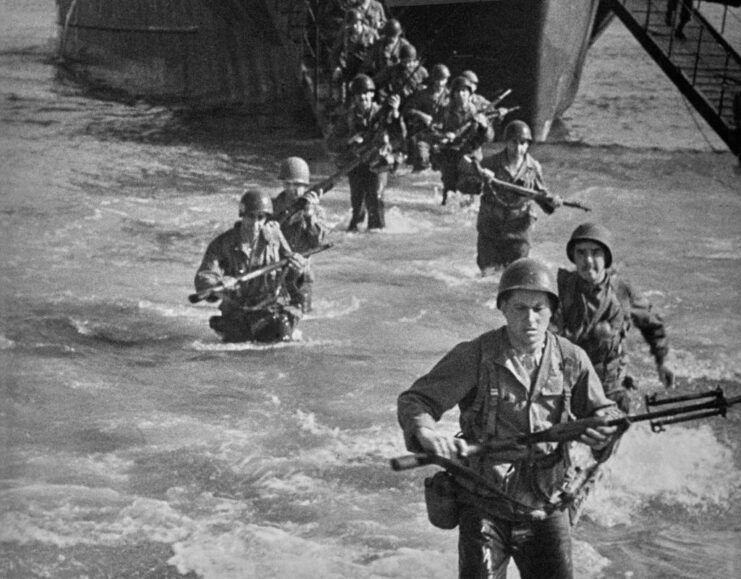
Photo Credit: FPG / Archive Photos / Getty Images
As aforementioned, the Germans were anticipating an attack by the Allies, but that doesn’t mean they were willing to do anything to prevent the landings. What are we referring to, you ask? Waking the Führer from his slumber.
The Allies launched Operation Overlord early in the morning of June 6, 1944. When the call came to the Wolf’s Lair at 4:00 AM, the Führer was still fast asleep and no one wanted to wake him up; they were scared of what he’d do if distubed. Without direct orders, German troops were left to wait on the sidelines while the Allies moved inland.
While the order eventually came, it was several hours delayed.
Sixteen soldiers received the Medal of Honor

Photo Credit: Bettmann / Getty Images
For their efforts during the D-Day landings and the wider Battle of Normandy, 16 American troops were awarded the Medal of Honor, nine of them posthumously. Of that total, four were directly related to action on June 6, 1944: Pvt. Carlton W. Barrett; First Lt. Jimmie W. Monteith, Jr.; T/5 John J. Pinder, Jr.; and Brig. Gen. Theodore Roosevelt, Jr.
If that last name sounds familiar, it’s because Roosevelt was the eldest son of US President Theodore Roosevelt. On D-Day, he directed the men who landed on Utah Beach, ultimately allowing the Allies to secure the beachhead.
Lt. Herbert Denham ‘Den’ Brotheridge
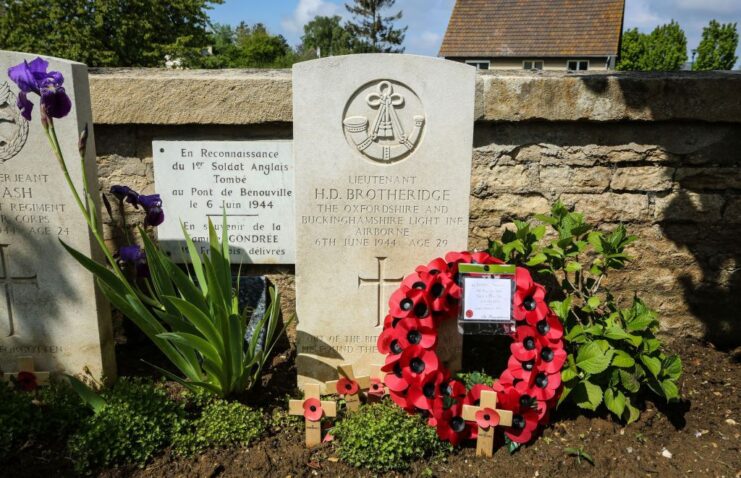
Photo Credit: Gareth Fuller / PA Images / Getty Images
Have you ever wondered who the first Allied casualty of the D-Day landings was? According to reports, it was Lt. Herbert Denham “Den” Brotheridge, an officer in the British Army.
Serving with the 2nd Battalion, Oxfordshire and Buckinghamshire Light Infantry, he was killed while taking part in Operation Tonga, a mission undertaken by the British 6th Airborne Division to take control of and destroy the Merville Gun Battery. The site was approximately eight miles from Sword Beach.
While taking on German machine gunners, Brotheridge was hit in the back of the neck by enemy fire. While attempts were made to render medical aid, he perished.
Playing the bagpipes
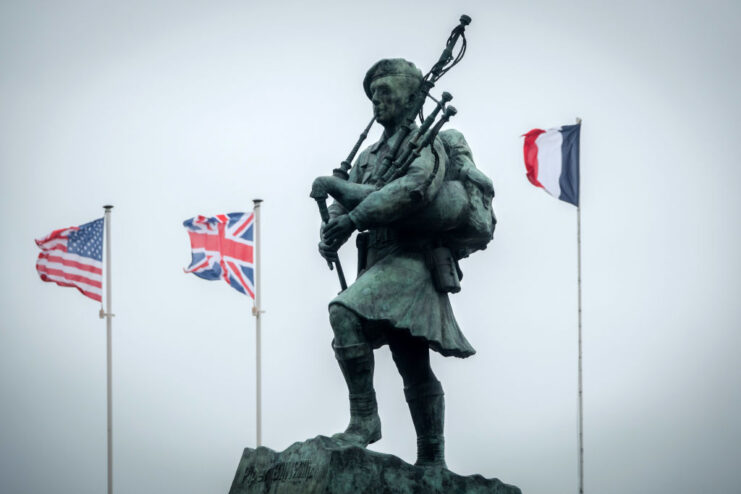
Photo Credit: Matt Cardy / Getty Images
Several notable individuals participated in the D-Day landings, but none were as unique as “Piper Bill” Millin, whose music led British Commandos from Sword Beach to Pegasus Bridge.
Millin played the bagpipes under Simon Fraser, 15th Lord Lovat, who’d been appointed the commander of the 1st Special Service Brigade (1st SSB). Under a hail of enemy and friendly fire, the former played his music, walking the entire length of Sword Beach three times, before moving toward the key bridge area.
How did he survive without a weapon, you ask? Well, according to a German soldier who spoke to Millin decades later, the enemy forces thought he was “off your head” – they didn’t want to waste their bullets on him!
Outnumbering the Luftwaffe 30:1
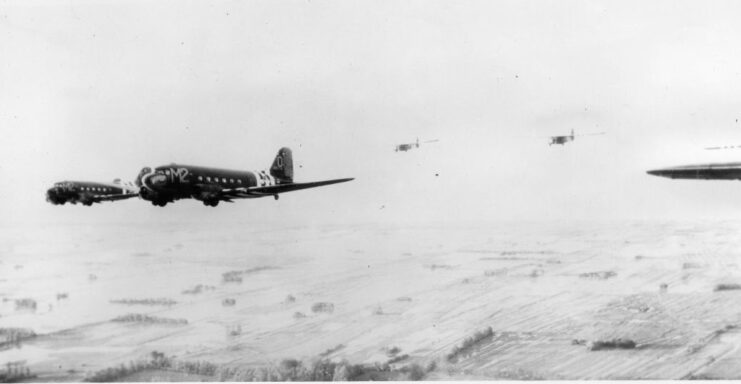
Photo Credit: PhotoQuest / Getty Images
Approximately 11,000 Allied aircraft participated in the D-Day landings, a sizeable number, given the dwindling numbers of the Luftwaffe.
According to the BBC, the Allies outnumbered the Germans 30-to-one in the air. Given this, the latter failed to down any of the former’s aircraft in air-to-air combat.
How many casualties were suffered?

Photo Credit: MPI / Getty Images
On June 6, 1944, alone, several thousand casualties were suffered by both sides. The Allies inflicted between 4,000 and 9,000 on the Germans, while they themselves experienced just over 12,000. According to the National WWII Museum, the breakdown for the Allies was:
United States – 8,230
United Kingdom – 2,700
Canada – 1,074
Much of the footage was lost in the English Channel

Photo Credit: PhotoQuest / Getty Images
Have you ever wondered why so little in the way of video footage exists of the D-Day landings? Well, the reason is it was accidentally dumped in the English Channel – true story.
More from us: A Bankrupt Oskar Schindler Abandoned His Wife After World War II
Are you a fan of all things ships and submarines? If so, subscribe to our Daily Warships newsletter!
American film director John Ford was tasked with capturing footage of the landings on Omaha Beach, with the assistance of the US Coast Guard. The majority of the film reels were subsequently placed in a duffel bag bound for Britain. However, on the way, the bag was accidentally dropped into the English Channel by Maj. W.A. Ullman, a junior officer.





